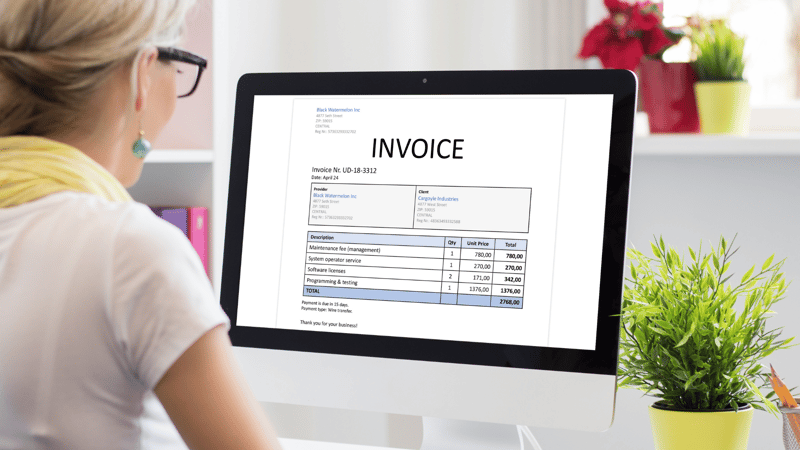Simplify Audits With AP Automation
Few things keep accounts payable managers up at night like the stress of navigating an audit. The process can be complex and time-consuming,...

It’s supposed to be the most wonderful time of the year.
Unfortunately, too many accounting departments spend the majority of their precious holiday season in the office, scrambling to prepare for the year-end audit.
Teams that still rely on paper invoices or those that have gaps in their accounting technology are finding themselves working long hours and weekends trying to wrap up outstanding invoices and compile information for auditors.
Accounts payable automation software has long demonstrated its ability to save accounting departments time and money, but that same technology also serves to simplify the audit process for finance professionals and auditors alike.
One of the biggest things that Accounts Payable departments are constantly on the lookout for is fraud. Auditors will be scouring your financials for any hints of misstatement – whether by error or through criminal intent – so it is essential that no abnormalities slip through unnoticed.
If the accounting team is the financial line of defense for an organization, then it follows that they ought to be outfitted with the best tools for the job. AP Automation allows for advanced security measures and internal controls such as custom permissions for sensitive information, multiple approvals, and escalation procedures.
The last thing your team wants to be doing as the year draws to an end is bustling around trying to rectify an incorrect expense coding or ironing out an overpayment error with a vendor. Faulty data entry is a primary contributor to audit season mayhem and is a major red flag to auditors.
Errors in even a single digit can have cascading consequences when it comes to issuing the correct amount of money to vendors and ensuring that the supporting documentation accurately reflects and supports those numbers.
Automated GL Coding and Optical Character Recognition (OCR) can eliminate manual invoice data entry while Automated 3-Way Matching serves as a last line of defense to ensure consistency across the invoice, PO, and goods received.

Manual ap processes and paper-based routing are two more big catalysts for year-end strife. Under these systems, teams often work late to hunt down lost invoices or come into the office on the weekends for last-minute approvals. All it takes is a piece of paper to slip behind someone’s desk or an email attachment to be moved to the wrong folder for the entire system to crumble in the form of forgotten, delayed, or duplicate payments.
When an AP team is relying on paper moving throughout the office or a series of email attachments flowing between approvers, mistakes become inevitable. That’s why automatic approval routing is so essential to ensuring timely, accurate, and traceable payments.
After a new invoice is entered utilizing OCR, that invoice can be automatically routed through a rules-based workflow that not only ensures compliance but also enhances visibility. Approvers can access invoices remotely and even make approvals through email. Finance leaders and auditors can quickly identify where an invoice is in the process and everyone who has touched the document throughout its life cycle.
With any audit, it will be expected that supporting details for payments, especially large or unusual payments, are on hand and easily accessible. Not only do most manual accounting departments struggle to collect that information, but they also tend to waste a large amount of time filing throughout the year, followed by more wasted time retrieving it if it comes up in an audit.
As much as process automation technology can accelerate tasks, it is also crucial for building a complete and easily accessible paper trail. When using an AP Automation solution that has a document management component, financial records are automatically updated for any document that has been entered into the system. Auditors will be able to review the entire history of any given transaction including any changes or decisions that were made along the way.
Most importantly, you’ll no longer have to collect all that information yourselves. External auditors are granted tailored access to everything they need through custom permissions so they can review essential data without you having to let them into your ERP. That makes for faster audit times, fewer fees, and happier auditors!

Seasoned accountants know that the best way to prepare for audit season is to ensure data accuracy throughout the year. Realistically though, a team that is operating on manual processes simply cannot be efficient AND completely foolproof.
When properly handled, a year-end audit is an incredible opportunity to learn where your business can improve its financial processes. AP Automation technology turns every single day into audit preparation while simultaneously creating added efficiency without the need for increased headcount.
Support your finance team by learning more about the benefits of Accounting Automation: Download our Accounting Automation whitepaper

Few things keep accounts payable managers up at night like the stress of navigating an audit. The process can be complex and time-consuming,...

Has your organization ever pulled the trigger too fast on a software purchase? It turns out that the product isn’t all you thought it would be, and...

Do you shy away from the automation conversation because the change to your business seems too great? Automating your business can be a big...